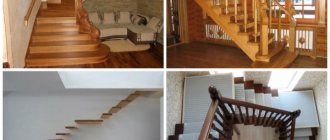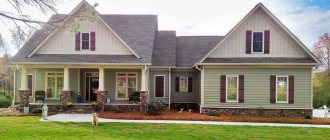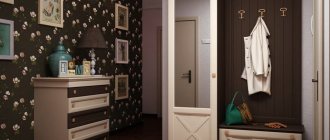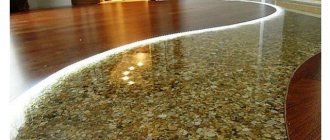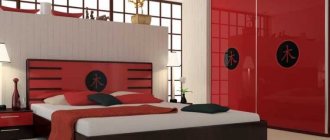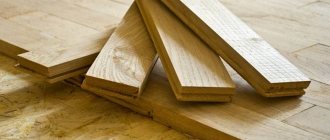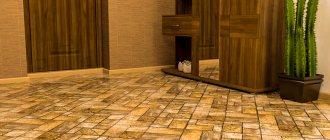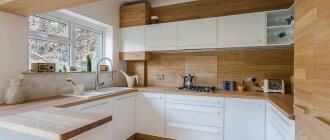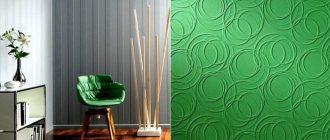Cantilever canopy
The first way is to build a canopy from consoles. Before you figure out how to attach a canopy to your house or on the property, you should create a project for it. In this case, it is necessary to take into account during calculations:
- dimensions of the new building;
- the force of the load on it from wind and precipitation;
- snow load;
- the place where the canopy will be erected.
Different types of awnings are made from different materials. If you have a project, you will be able to choose the ideal amount of building materials.
If a cantilever carport is being built for a car, then it is necessary to take into account the passage of a loaded car under it.
If the canopy is associated with any building, then its height will be limited by the roof of the building. In this case, it will not be possible to create a full-fledged arch. Due to the lack of free space near the house, small sheds are often erected.
Canopy building material
Polyvinyl chloride PVC awning
Plan of a carport with a pitched roof.
To equip the canopy, a material such as a polyvinyl chloride PVC awning (awning fabric) is used. This vinyl sheet, reinforced with durable materials, has a glossy or matte varnish. The material is wear-resistant and completely waterproof: used for making bathtubs for small pools in the country. This type of roofing can be easily installed on the roof rafters by securing eyelets around the perimeter and passing a strong cord through them. This type of fastening can be easily done to the protruding parts of a gable (ridge) roof. As an option, a canopy covered with awning fabric can also be made with a mosquito net.
Metal tiles
In appearance, a roof made of metal tiles is similar to a roof made of ceramic tiles. It is also made similar in color to ceramic tiles. Steel sheets are galvanized and coated with polymer paints, which significantly increases their service life. If necessary, the sheets should be shortened and cut using metal scissors or a fine-toothed saw (hacksaw). The dimensions of the sheets are 80-800 cm in length. Metal tiles are made from sheets of standard width. Therefore, depending on the manufacturer, its width ranges from 1.16 to 1.18 m. The useful width must be determined taking into account the overlap (6-8 cm). If the sheet length is not enough, then the overlap along the length is 10-13 cm.
Warning: no matter what you build, under no circumstances should metal tiles be cut with abrasive wheels using an angle grinder (grinder). This method of cutting will lead to melting of the edges of the sheet, removal of the polymer coating and quickly covering them with rust.
The slope of the roof covered with metal tiles must be at least 14°. This value is easy to calculate if the difference in heights H between the supports located in the direction of inclination of the roof slope and the distance between them L is known. If the condition is met
A/L ≥ 0.25 (1)
then the angle of inclination will be greater than 14°.
Polycarbonate
Recently, metal tiles have begun to be replaced with a more practical material for canopies - polycarbonate. It is translucent (up to 90%), environmentally friendly and durable material. It will withstand hail impacts and snow loads. Provides good protection from ultraviolet rays of the sun. It is fire-resistant and non-toxic material, resistant to chemical attack.
Monolithic and profiled polycarbonate has a thickness of 2-12 mm, it is convenient to install. Sheet dimensions 3660×660 mm. Colored versions of this material are suitable for covering canopies, but colorless polycarbonate is also available. The slope of a flat polycarbonate roof must also be at least 14°. Warranty service life up to 10 years. There are many options for polycarbonate shelters with improved design.
Key points
There are many options for building a canopy in the yard with your own hands. To get the best result, it is worth considering several basic parameters during the construction of a canopy.
Canopies in the courtyard of a private house: photos of structures depending on the area of application
Canopies are, first of all, structures designed to protect a particular area from precipitation (whether snow or rain), hot sun rays or falling leaves. Therefore, they place a canopy in the courtyard of a private house, mainly over recreation areas and the most “passable” areas.
Canopy in the form of a “visor”
We can say that a canopy over the entrance is mandatory - it protects not only from rain, but plays the role of a kind of protection against wet snow sticking to the steps and thresholds, which can lead to falls and injuries. There is another variety - a canopy extension over the terrace, with one side fixed to the wall, under which comfortable furniture, a barbecue and other attributes of a comfortable stay can be located. As a rule, shelters over the porch are made in the same style as the main building, using appropriate materials and colors. For example, for a house made of timber, a wooden structure with the possible use of forged elements is suitable.
Shed-extension
You can implement a canopy in the yard to protect the area from the entrance to the gate or outbuildings. Such structures have quite large dimensions and, for the most part, are an extension canopy, one side of which is attached directly to the wall of the house, and the other is supported on supports. Their undoubted advantage is that you can freely move along the paths at any time of the year, and in winter you do not have to clear them of snow. They can also be stationary (with supports on all sides) or mixed type.
Pool canopy in the courtyard of a private house
In this case, it is better to construct closed canopies in the courtyard of a private house - the photos clearly demonstrate the advantage of “greenhouse” type structures.
You can use sliding elements, with which you can open the mobile sections in hot weather and close them securely in windy weather.
gazebo canopy
This version of the canopy is a favorite structure for summer residents and owners of country houses. Gazebos can be of various shapes: round, square, polyhedron-shaped, as well as open (the design involves the presence of supports and a roof) or semi-closed type (there are side walls). Such buildings are usually located in the greenest, picturesque areas of the site on hills.
Canopy over the playground
A canopy over a children's playground is a fairly popular design for families. Even in the worst weather, it is very difficult to keep a child in the house, so a canopy located above the swing, sandbox and horizontal bars will be a good help for the child and his parents. In addition, the canopy will protect the wooden elements of the site from precipitation and extend their service life.
Canopy to the yard to protect the car
A carport will definitely become indispensable for owners of small plots where there is virtually no free space to build a garage. Carports in the courtyard of a private house (the photo shows their various options) can also serve in the event of guests arriving, who, undoubtedly, will be more comfortable seeing their car on the site, and not outside it. Among other things, installing such a canopy will require significantly lower financial costs than building a garage.
Canopy shape
Canopies over the porch of a country house can have different shapes:
- Arched. Such a canopy usually has very good parameters;
- Gable. A canopy of this shape has identical characteristics to the roof of a private house;
- Single-pitch. This option is the simplest and is very reliable.
How to decorate a canopy
A canopy is a simple architectural form consisting of a frame and a roof. And the entire design is essentially based on the search for original solutions for decorating the structure. We have already mentioned carving, forging, and decorative lattice. Another popular way to decorate a building is to use unusual materials in the design: a thatched roof, shingles, parapet or wicker walls, clay decorations. Depending on the choice of material for decoration, different directions of ethnic style will be traced.
Unusual and beautiful decorative canopies are made from original materials
Climbing plants, beautiful bushes, and vines are well suited for decorating canopies near private houses and in summer cottages. To make the building more closed, you can plant trees with a dense crown along the perimeter.
Plants will decorate the building and create a day
Beautiful curtains will not only decorate the building, but also make it more comfortable. For this purpose, a colored awning, openwork tulle, fabric with patterns, impregnated with water-repellent agents are suitable.
Curtains are beautiful and functional; the design solution is relevant for all types of structures
Lanterns, LED lighting, garden sculpture, flower beds around - all this will help to arrange a canopy, combine it into a single design with the natural landscape and decorate your site.
The main types of such structures
The design can be:
- Closed type. Such canopies usually have closed openings and have windows;
- Semi-closed type;
- Open when making a light roof on several supports.
Racks
Typically, when creating canopies, wooden or metal posts are used. But the structure will be much more stable if you use concrete supports. The holes for the supports must be dug below the freezing level of the ground, somewhere around one meter.
However, if the shed is being built in the northern region, you will have to dig a much larger hole. Sand is poured and compacted at the very bottom, then concrete is poured and a support is placed. First it needs to be leveled, and only then should the hole be filled to the end.
Not just a canopy
“Make sheathing panels to the shed that is attached to the house, as in the photo, and install them between the supports”
Are pillars with a roof boring? The structure can be improved. The easiest way is to hide simple metal supports. They can be painted in an unusual color, decorated with columns or landscaped with climbing plants. Are you ready to go even further - make lathing panels for the canopy that is attached to the house, as in the photo, and install them between the supports.
Anyone who knows how to hold a hammer can make “walls.” All you need to do is fill the wooden frame with thin slats of the required size. The latter are laid crosswise to create fairly wide diamond-shaped or square “windows”.
Simple wooden canopy
It’s a good idea to plant vines along such walls. They will beautifully weave the resulting gazebo and create a relaxing atmosphere in it. Place a sofa and a couple of armchairs there, hang a TV, and you will have an excellent relaxation area. It will be nice to have a meal there. In this case, the situation should be somewhat different. Instead of upholstered furniture, we put a table and benches, and decorate the walls with thematic attributes.
Climbing plants beautifully entwine the gazebo
By the way, the issue of landscaping can be solved in another way, for example, by hanging a pot with petunias on a supporting beam. Flower pots may also appear on the walls themselves. And along them, along the perimeter of the canopy, a hedge of low-growing shrubs is planted.
Canopy made of wood and metal
It is not advisable to dig wooden posts into the ground, even if they have been treated with moisture-proofing compounds. It is recommended to pour concrete supports with a minimum depth of 0.5 m.
Reinforcement is placed in the concrete racks and a wooden block is secured. In this case, wooden rafters are used. It takes a lot of time to build such a canopy.
Canopy frame
The frame for the canopy can be wooden or metal. Assembled using self-tapping screws or bolts. If you use laminated timber or dry boards during construction, then such a canopy will serve for many years.
The metal parts of the frame are usually welded. For a large canopy, it is better to choose a semi-arched shape.
Supports should be placed no more often than every 120 cm, and two posts are enough to the attached wall. For a tile roof it is better to lay timber often, but for polycarbonate it is pointless.
Very often, supports and rafters made from profiles have different thicknesses. This depends on the location of application of a particular canopy element. The pillars must be positioned strictly vertically.
Wooden canopy for a summer residence
If the canopy will serve as part of the porch and it is attached to the house, then it is best to use wood. Wood is an environmentally friendly and safe material that is easy to process and does not require special construction skills. At the same time, it must be remembered that wood needs to be pre-treated with antiseptics and protective solutions to prolong its service life. To assemble the structure, nails or screws and metal corners are used. It is worth noting that to organize a canopy it is not necessary to use only wood, because it can be used to build a frame by covering the canopy with any convenient material (metal, polycarbonate or slate).
Initial work
The very first thing you should do is clear the area where the canopy is located of any debris. After this, it is leveled with sand and gravel. A complex and large canopy requires a foundation.
Make recesses for the racks and lay the electrical cable. Determine the spacing of the racks. If there is a body of water nearby, then the supports should be primed and waterproofed.
Carports
Touching upon the topic of non-permanent country houses, we cannot ignore carports. They not only serve as an analogue of a garage and protect the iron horse from the tests of nature, but also greatly simplify the life of car enthusiasts. As practice has shown, even an economical shed at a dacha is the best possible parking.
There are only two mandatory requirements for car pavilions:
- They must be roomy enough to hide the owner's car.
- Have convenient access. We remember that these canopies are created to make life easier, not more difficult.
Well, examples from owners who have the means and good taste.
Roof
Slate can be of several types:
- Fiber cement is very reliable and durable. Can withstand heavy loads, but is rarely used during construction;
- Asbestos-cement is a very popular type. Sheets of such slate can be flat or wavy.
- Corrugated sheeting is a very strong and durable material with good ultraviolet resistance.
- The metal profile can be hollow, with a cross-section of different shapes. Used for rafters and posts.
Lumber:
- board;
- beam;
- plywood.
Plywood is used for lining under the roof.
Roofing felt is rarely used, usually for waterproofing.The awning is also rarely used. It is a seasonal roof option.
Firewood shed
But not only equipment needs protection; a country shed can easily be used for storing solid fuel, namely firewood. If you have never lit damp or frozen logs, you will hardly be able to understand the usefulness of wood burners, but lovers of bathhouses and barbecues know a lot about them.
The classic firewood shed is built according to your needs. That is, it must be of such dimensions as to accommodate a reserve of logs for two years in advance. And it is located as close as possible to the place of use, but in no case in the far corners of your site.
After all, if in the summer you can somehow cope with this route, then in the winter you will need to regularly clear the path of snow. And this is a long and tedious task.
Now for some design ideas. Not all of us are born artists, but everyone can make a woodcutter based on a picture.
Metal profile canopy
For roofing a canopy made from a profile, it is recommended to use grade “N” corrugated sheeting.
Making a canopy from a metal profile
It is necessary to calculate the weight of the structure. Based on the data obtained, the material for the frame is selected.
It is not recommended to install corrugated sheets in windy weather. Sheets of the required size are cut using metal scissors. If the walls are not insulated, there is no need to waterproof the roof.
The profile is attached starting from the bottom of the roof. The new sheet is laid with a slight overlap. To make the joints airtight, you can use mastic. The sheets are attached to the sheathing using self-tapping screws.
Fabric awnings for cottages
Don't want to waste time making complex and bulky structures? In this case, you can make a light fabric canopy; moreover, it is easy to find in the store. Construction stores already sell ready-made frame structures, which include all the necessary elements. A summer resident just needs to open the instructions and act according to them, creating a reliable canopy that allows him to enjoy relaxing in the fresh air.
A fabric canopy allows you to quickly fold the awning, because there are specially designed levers and mechanisms for this. To build the frame, no special skills or special efforts are required, so even a child can unfold the fabric canopy. Of course, you can save money by creating a fabric canopy yourself and choosing bright, picturesque textiles for it, which allows you to make an original design that illuminates the appearance of the area.
Polycarbonate canopy
This option is the most popular. This material is quite light and durable. It can withstand quite heavy loads. It is very easy to cut and drill.
The factor that makes polycarbonate canopies popular is the availability of a wide range of colors for this material.
Necessary for construction and finishing
The structures are made from various building materials, which are sold in any store. The frame of the canopy is made of wood or metal, sometimes metal parts are combined with wooden ones. In addition, to facilitate and simplify the design, plastic pipes are used as a base. The roofing material is chosen at your discretion, it can be as follows:
- monolithic polycarbonate;
- corrugated sheeting;
- fiberglass;
- metal tiles;
- durable polyethylene;
- waterproof fabric;
- plexiglass, glass;
- slate.
Each type has positive and negative sides. You need to choose a specific coating taking into account the design features and strength of the base. But, in any case, it is recommended to use lightweight types of coating that will not overload the frame and foundation of the suspended structure. It makes sense to use metal sheets, tiles and slate only in the case of permanent structures attached to a country house.
Advantages of corrugated sheets
A canopy made from corrugated sheets does not require additional decoration, as it initially has a pleasant appearance. A careful choice of color and shape of the material will allow you to complete the design of your personal plot. In addition, the described option has good operating parameters. The key positive aspects of using corrugated sheets are as follows:
- resistance to mechanical stress;
- durability;
- environmental friendliness;
- frost resistance;
- does not require careful care;
- The dye is resistant to sunlight.
Attention!
Corrugated sheeting is easy to install and there is no need to purchase additional materials to secure the sheets - standard consumables are sufficient.
Pros of polycarbonate
Polycarbonate construction is a good choice, as the sheets are flexible and can be changed to the desired shape. The material is lightweight, which allows you not to weigh down the hanging structure and not to make the frame too strong. There are several types of polycarbonate. Any type of this material is characterized by certain features and advantages:
- Monolithic - similar to glass, it can be colored or transparent.
- Cell phone – the price is modest and it’s easy to fix.
- Profiled - similar in characteristics to monolithic, but has a wave-like shape - like slate or metal tiles.
The choice of a certain type depends on what the owner of the summer cottage wants to get in the end. Nowadays, monolithic polycarbonate is in demand, which, in addition to strength, is characterized by high appearance properties. The monolithic type of polycarbonate, with the exception of decorative properties, is also able to withstand high mechanical loads - it is not a fragile material.
Textile
Awning fabrics are often used as the main material for canopy roofs. This material is used not only for self-construction of hanging structures; many automatically assembled structures also have a fabric roof. The frame of such canopies is mainly made of metal. The following types of fabric are used for covering:
- canvas;
- acrylic;
- tarpaulina;
- polyester.
A removable fabric roof for a canopy is a common occurrence, since the owner does not have to worry about bad weather damaging it while he is away from the dacha. Moreover, in fact, 9 out of 10 cafes and restaurants that have open areas use fabric as a canopy roof. This is explained by the fact that such summer areas are easy to clean for the winter - they do not require constant maintenance, like permanent structures.
Bamboo and reed
Canopies made of bamboo and reeds are an original construction option for a summer cottage, which allows you to increase the uniqueness of a particular landscape design. The reed stems are in several layers, laid in rows and pulled together into plates. Reed layers are suitable for covering. Such a reed roof will not allow water to pass through and will not heat up under the rays of the sun, and the shading will be strong.
For reference!
To enhance aesthetics, the frame of a canopy with a reed roof is often made of bamboo, but more often wooden beams are used.
Canopies made of bamboo provide protection from the sun and precipitation not only due to the characteristics of the material. Bamboo roofs are made in a certain way - the design of such a roof is most often conical, but it is also possible to make other shapes. You can make single-pitched, arched, or gable roofs from bamboo, but you must maintain the slope angle.
Advantages of profile pipes
Canopies made from profile pipes are distinguished by their ease of construction and lightness of the final structure. This option is characterized by high strength due to stiffening ribs, the function of which is performed by the edges. The profile pipe can be used to make curved and straight surfaces. The hollowness of the material affects the strength, which is an advantage over solid-rolled pipes. There are several types of profile pipes:
- painted;
- unpainted;
- covered with special composition.
The pipes are fastened by welding or bolts; different projections are used - both parallel and perpendicular. This option can be used in the construction of not only temporary canopies, but also stationary ones. There are many photographs and a large number of drawings of original canopies, which are made using profile pipes. In addition, this material is relatively cheap, and if you take unpainted pipes, you can save an additional 30% of the cost.
Features of wooden canopies
Wooden structures fit well into any design concept for summer cottages. The tree does not spoil the overall idea, but only complements it, adding naturalness and home comfort to the design of the garden area. The wooden structure is easy to decorate, thereby making the building unique. A wooden canopy is made from various processing options for natural materials:
- rounded logs;
- timber;
- tree trunks;
- boards
You don’t need any special skills to build a wooden canopy. This material is easy to decorate using carving and painting. But the main disadvantage of wood is that it wears out a lot and does not tolerate dampness well. To reduce the negative impact of atmospheric phenomena, the wood must be pre-treated with special compounds. Then this treatment will need to be repeated annually, which entails additional financial losses.
For reference!
Small canopies are often made from wood to protect the firewood from getting wet in the rain.
Making a polycarbonate canopy
Polycarbonate sheets are cut, and then the edges are covered with punched tape. It is recommended to use a lightweight frame. The thicker the sheet, the wider the sheathing should be. The lower protective film is removed at the beginning of installation, and the upper one at the end.
Having completed the arrangement of the canopy, drain gutters should be installed and the area under the canopy should be arranged. A large number of photos of DIY canopies can serve as an example and source of inspiration for creating your ideal canopy.
Alcove
By this term we mean a shed located in the garden and equipped for relaxation. As a rule, it is installed away from passage areas and performs both a protective and decorative function. That is, it protects vacationers from bad weather and pleases the eyes of its owners.
In most cases, such a canopy at the dacha is made with your own hands, but there are also purchased gazebos on sale. Typically this is:
- wooden for log house;
- metal under polycarbonate.
Both products do not require a capital foundation and can be installed on an area that already has a hard surface.
Log gazebos
Wrought iron gazebos
DIY canopy photo
0

